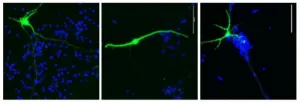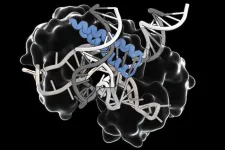(Press-News.org) New York, NY | February 27, 2025: Employee burnout is likely costing companies millions of dollars each year, ranging from approximately $4,000 to $21,000 per employee in the U.S., according to a study published in the American Journal of Preventive Medicine. That means a 1,000-employee company in the U.S. would on average be losing about $5 million annually. These estimates are based on a computational simulation model developed by the Public Health Informatics, Computational, and Operations Research (PHICOR) team based at the CUNY Graduate School of Public Health and Health Policy (CUNY SPH) working with researchers from Baruch College, Johns Hopkins University (JHU), and the University of San Diego (USD) Knauss School of Business.
“Our model quantifies how much employee burnout is hitting the bottom line of companies and organizations,” says Bruce Y. Lee, CUNY SPH professor, PHICOR and Center for Advanced Technology and Communication in Health (CATCH) executive director, and senior author of study. “Therefore, it can give companies and organizations a better idea of how focusing more on employee well-being could help decrease costs and increase profits."
The computational model simulates an employee who moves through different stages ranging from active participation at work to disengagement and burnout over time depending on what stressors the employee encounters. One can specify the position of the employee (e.g., hourly non-manager, salaried non-manager, manager, or executive) and what state that employee is in initially (e.g., engaged, burned out, leave their job, overextended, disengaged, or ineffective).
As time in the simulation proceeds, the employee has probabilities of encountering different stressors that relate to the workplace (e.g., workload, community, control, rewards, fairness, and value) and non-workplace (e.g., family, cultural and psychological environment, financial, and health).The number of stressors and the type of stressors (workplace, non-workplace) that an employee experiences during a two-week period determines if the employee stays in the same state or moves to a different state. While the employee is in a given state, that employee has certain productivity levels and experiences different possible health effects.
The team then ran the model to estimate the resulting cost to an employer when different employees experience different types of disengagement and burnout at different times. For example, an hourly non-manager employee going through burnout would cost an employer on average $3,999 (95% range: $3,958-$4,299). These costs would be on average $4,257 (95% range: $4,215-$4,299) for a salaried non-manager, $10,824 (95% range: $10,700-$10,948) for a manager, and $20,683 (95% range: $20,451-$20,915) for an executive. If one were to assume that a 1000-employee company has the typical distribution by employee type (59.7% non-managerial hourly, 28.6% non-managerial salaried, 10% managers, and 1.7% executives), then the costs of employee disengagement and burnout to the employer would total $5.04 million (95% range: $5.03-$5.05 million) annually. There would also be an associated 801.7 (95% range: 801.5-801.9) quality-adjusted life years lost each year.
All of this quantifies the substantial impact that employee disengagement and burnout has on the employer’s bottom line. These costs range from 0.2-2.9 times the average cost of health insurance and 3.3-17.1 times the average cost of employee training to employers. These results also give a sense of how much employers might want to invest in preventing disengagement and burnout. There are a number of possible interventions that could reduce the risk of disengagement and burnout from companies offering mental health benefits to financial literacy programs to properly managing employee workloads. However, each of these do require financial commitments to establish and maintain.
“Burnout is pervasive and it’s costing organizations millions each year,” said Molly Kern, professor at the Zicklin School of Business at Baruch College and co-author of the study. “Organizational leaders need to consider how their cultures and benefits programs support the 60% of employees silently struggling with burnout."
Funding: This work was supported by the National Center for Advancing Translational Sciences of the National Institutes of Health via award number U54TR004279, the Agency for Healthcare Research and Quality (AHRQ) via grant 1R01HS028165-01, the National Institute of General Medical Sciences as part of the Models of Infectious Disease Agent Study network under grants R01GM127512 and 3R01GM127512-01A1S1, the National Science Foundation via award number 2054858 and U.S. Agency for International Development under Agreement No. AID-OAA-A-15-00064. Statements in the manuscript do not necessarily represent the official views of, or imply endorsement by NIH, AHRQ, the US Department of Health and Human Services or USAID. None of the study sponsors had any role in study design; collection, analysis, and interpretation of data; writing the report; or the decision to submit the report for publication.
Declaration of Conflict of Interest: No financial disclosures have been reported by the authors of this paper.
Media contact:
Alexis Dibbs
dibbs.alexis@gmail.com
About CUNY SPH
The CUNY Graduate School of Public Health and Health Policy (CUNY SPH) is committed to promoting and sustaining healthier populations in New York City and around the world through excellence in education, research, and service in public health and by advocating for sound policy and practice to advance social justice and improve health outcomes for all.
About PHICOR
Since 2007, PHICOR, Public Health Informatics, Computational, and Operations Research (www.PHICOR.org) has been developing computational methods, models, and tools to help decision makers better understand and address complex systems in health and public health. Follow @PHICORTeam on Facebook, LinkedIn, YouTube, and Twitter for updates.
About JHU
The mission of Johns Hopkins Medicine is to improve the health of the community and the world by setting the standard of excellence in medical education, research and clinical care.
About Baruch College
Backed by a long tradition of excellence in higher education, the Zicklin School of Business is located within Baruch College—an institution that consistently ranks among the region’s and nation’s top performers in academic excellence, diversity, and value.
About University of San Diego’s Knauss School of Business
The Knauss School of Business at the University of San Diego (USD) is committed to developing socially responsible leaders with a global mindset through values-based education and innovative research. Together, we work to advance sustainable and ethical business solutions that address the world's greatest challenges.
END
Employee burnout can cost employers millions each year
A 1000-employee company may lose $5.04 million annually
2025-02-28
ELSE PRESS RELEASES FROM THIS DATE:
The cost of domestic violence to women's employment and education
2025-02-28
A new report reveals how domestic violence impedes women’s employment, often forcing them out of the workforce altogether. In many cases they work fewer hours, for less pay, than employed women who have not experienced domestic violence.
This ‘employment gap’ can be as large as 9.4 per cent: 72 per cent of women who have endured economic abuse in the past five years are in employment compared with 81.4 per cent of women who have not been subject to such abuse.
The report, The Cost of Domestic Violence to Women’s Employment and Education, draws on data that enables, for the first time, a quantification of the employment and educational ...
Critical illness more common than expected in African hospitals - low-cost treatments offer hope
2025-02-28
One in eight patients in hospitals in Africa is critically ill, and one in five of the critically ill die within a week, according to a new study in The Lancet. The researchers behind the largest study of critical illness in Africa to date conclude that many of these lives could have been saved with access to cheap life-saving treatments.
Being critically ill means having severely affected vital functions, such as extremely low blood pressure or low levels of oxygen in the blood. In the new study, researchers show that one in eight patients in African hospitals, 12.5 percent, is in this condition. ...
How our lungs back up the bone marrow to make our blood
2025-02-27
Red blood cells carry oxygen from the lungs to every other organ, and blood-forming stem cells must make about 200 billion new red blood cells each day to keep the oxygen flowing.
For many years, scientists assumed that blood production took place in the bone marrow. But now, researchers at UCSF are showing it’s also happening in the lungs.
They found hematopoietic stem cells (HSCs) in human lung tissue that make red blood cells, as well as megakaryocytes, which produce the platelets that form blood clots. The findings appear Feb. 27 in Blood.
The work, which was supported by the National Heart, Lung, and Blood Institute ...
Fat transport deficiency explains rare childhood metabolic crises
2025-02-27
Researchers studying a protein linked to a rare, severe disease have made a discovery that sheds light on how cells meet their energy needs during a severe metabolic crisis. The findings could lead to new treatments for the disease and open new avenues of research for other conditions involving impaired fat metabolism.
When scientists at the Centre for Genomic Regulation (CRG) in Barcelona first identified a handful of protein-coding genes called TANGO in 2006, they had no idea that one of them, TANGO2, would eventually be linked to a life-threatening ...
Remote work “a protective shield” against gender discrimination
2025-02-27
February 27, 2025
Remote work “a protective shield” against gender discrimination
Survey of more than 1000 women shows incidence higher on-site versus out of the office
Toronto - Having staff physically in the workplace benefits companies and employees through stronger team collaboration and informal mentorship.
But as organizations continue to corral employees back into the office, they should recognize that women pay a price through increased exposure to gender discrimination, says a new study from the University of Toronto’s Rotman School of Management.
In ...
How air pollution and wildfire smoke may contribute to memory loss in Alzheimer’s disease
2025-02-27
LA JOLLA, CA—Air pollution contributes to nearly 7 million premature deaths each year, and its effects go far beyond the lungs. Breathing in wildfire smoke or automobile-related city smog doesn’t just increase the risk of asthma and heart disease—it may also contribute to brain diseases as diverse as Alzheimer’s and autism.
Scientists at Scripps Research have discovered how a chemical change in the brain—which can be triggered by inflammation and aging as well as toxins found in air pollution, pesticides, wildfire smoke and processed meats—disrupts normal brain cell function. Known as S-nitrosylation, ...
UAF scientist designing satellite to hunt small space debris
2025-02-27
A University of Alaska Fairbanks scientist is participating in a U.S. government effort to design a satellite and instruments capable of detecting space debris as small as 1 centimeter, less than one-half inch.
Debris that small, which cannot currently be detected from the ground, can damage satellites and other spacecraft in low-Earth orbit.
The idea is to outfit future satellites, such as those vital for communication systems, with technology to avoid space debris collisions.
Space debris travels ...
Innate immune training aggravates inflammatory bone loss
2025-02-27
Clinical research has long focused on ways to harness the actions of the immune system. From vaccines to immunotherapies, researchers have used their knowledge of the immune system to develop therapies to treat or prevent diseases from influenza to autoimmune disease and cancer.
Now, researchers from Penn’s School of Dental Medicine and international collaborators have investigated the effects of training the innate immune system in experimental models of two chronic inflammatory diseases, periodontitis and arthritis. They found that this “trained” immunity, or TRIM, led to increased bone loss in these models. This ...
An ancient RNA-guided system could simplify delivery of gene editing therapies
2025-02-27
A vast search of natural diversity has led scientists at MIT’s McGovern Institute and the Broad Institute of MIT and Harvard to uncover ancient systems with potential to expand the genome editing toolbox. These systems, which the researchers call TIGR (Tandem Interspaced Guide RNA) systems, use RNA to guide them to specific sites on DNA. TIGR systems can be reprogrammed to target any DNA sequence of interest, and they have distinct functional modules that can act on the targeted DNA. In addition to its modularity, TIGR is very compact compared to other RNA-guided systems, like ...
Mayo Clinic recognized as ‘World’s Best Hospital’ by Newsweek for the seventh straight year
2025-02-27
ROCHESTER, Minn. — Mayo Clinic has again received the No. 1 ranking in Newsweek's list of the "World's Best Hospitals." This is the seventh straight year Mayo Clinic has received the top ranking.
"This continued recognition is a tribute to our dedicated staff who consistently deliver unparalleled, compassionate care to our patients," says Gianrico Farrugia, M.D., president and CEO of Mayo Clinic. "We remain committed to delivering Category-of-One experiences for each patient who seeks our care while simultaneously working to transform healthcare to ...
LAST 30 PRESS RELEASES:
New science reporting guide published for journalists in Bulgaria
New international study reveals major survival gaps among children with cancer
New science reporting guide published for journalists in Turkey
Scientists develop a smarter mRNA therapy that knows which cells to target
Neuroanatomy-informed brain–machine hybrid intelligence for robust acoustic target detection
Eight SwRI hydrogen projects funded by ENERGYWERX
The Lundquist Institute and its start-up company Vitalex Biosciences Announces Strategic Advancement of Second-Generation fungal Vaccine VXV-01 through Phase 1 Trials under $40 Million Competitive Con
Fine particles in pollution are associated with early signs of autoimmune disease
Review article | Towards a Global Ground-Based Earth Observatory (GGBEO): Leveraging existing systems and networks
Penn and UMich create world’s smallest programmable, autonomous robots
Cleveland researchers launch first major study to address ‘hidden performance killer’ in athletes
To connect across politics, try saying what you oppose
Modulating key interaction prevents virus from entering cells
Project explores barriers to NHS career progression facing international medical graduates
Jeonbuk National University researchers explore the impact of different seasonings on the flavor perception of Doenjang soup
Two Keck Medicine of USC Hospitals named Leapfrog Top Teaching Hospitals
World-first discovery uncovers how glioblastoma tumours dodge chemotherapy, potentially opening the door to new treatments
A fatal mix-up: How certain gut bacteria drive multiple sclerosis
New AI tool identifies not just genetic mutations, but the diseases they may cause
Deep-learning model predicts how fruit flies form, cell by cell
Combination pills for high blood pressure may simplify treatment, improve long-term health
Immune system keeps mucosal fungi in check
Neurons within the brain use simple rules to localize genetic messages
Electrodes created using light
Second-hand gift-giving is a well-deliberated decision
How human interaction drove evolution to make bears less aggressive
National Poll: Few parents offer teens guidance on healthy eating during holiday season
Cannabis derivatives could provide new ovarian cancer treatments
Raising strong yeast as a petroleum substitute
Clues to the origin of hot Jupiters hidden in their orbits
[Press-News.org] Employee burnout can cost employers millions each yearA 1000-employee company may lose $5.04 million annually




